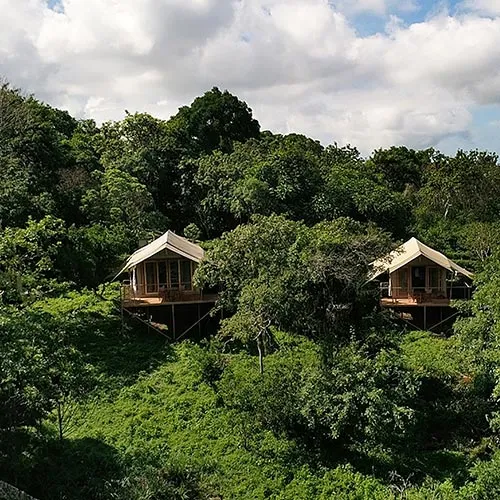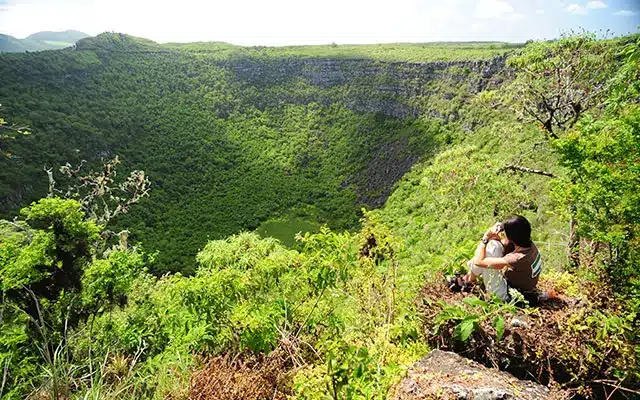
Santa Cruz Island: An Overview
Sitting at the centre of the archipelago, Santa Cruz is one of the most diverse islands in the archipelago, offering iconic wildlife, spectacular beaches and beautiful walks.
In addition to visiting uninhabited islands by boat, our Galapagos Safaris encompass a variety of private tours and immersive experiences on the island. Please note that these tours are exclusively available within our Safari packages
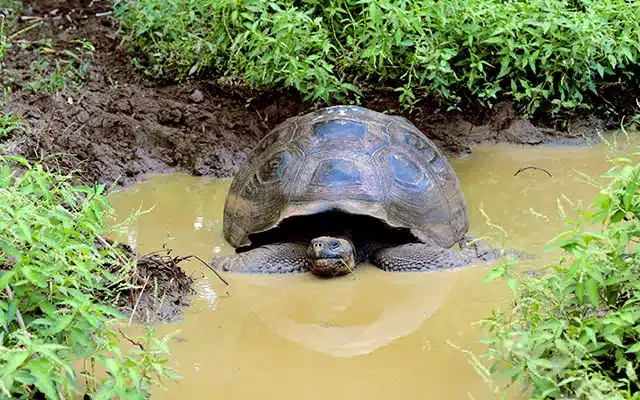
Rising from the Pacific Ocean in the heart of the Galapagos, its highlands – formed by volcanic upwelling in the blink of an eye in geologic time – rise to over 800 meters (nearly 3,000 feet). This change in elevation creates a wonderful variety of ecosystems: the dry coast, the cooler and forested highlands, and the transition zone between the two. This diversity of landscapes, flora and fauna makes it a fascinating playground for our Wildlife Safaris.
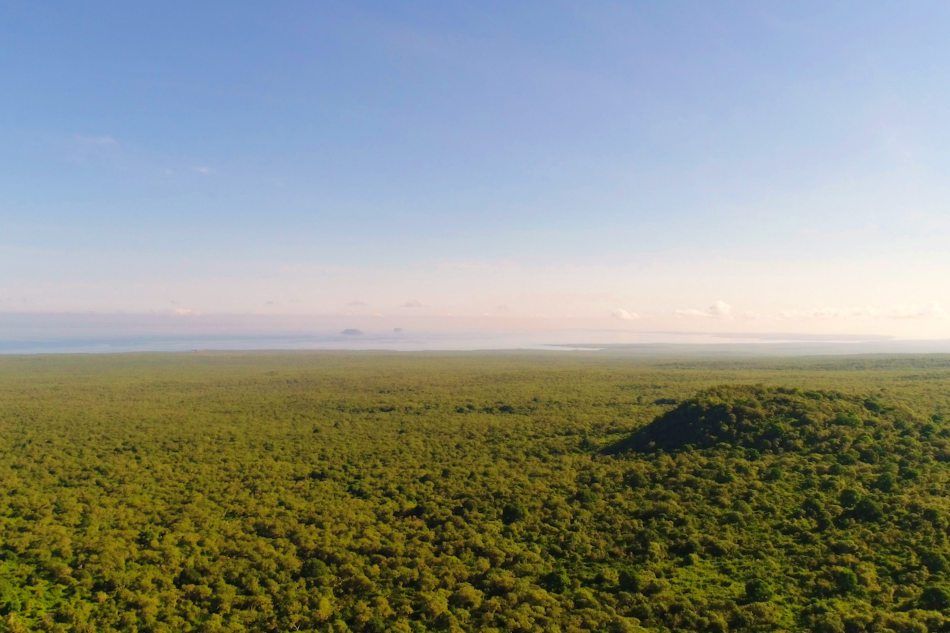
It is also the island we call home. Galapagos Safari Camp is located towards the centre-east of the island.
Private Galapagos Tours
All our Safari tours on Santa Cruz are private (unless otherwise specified). You will have your own car and driver, and your own naturalist guide. It is not permitted for visitors to enter the National Park without an official guide. (Note that our boat trips to uninhabited islands are usually shared excursions but we can charter a boat if a fully private Safari is preferred).
At Galapagos Safari Camp, guests can select from one or more of the following day tours to add to their itinerary.
1) The Highlands
To maximize your first day in the Galapagos Islands, guests are taken to a number of visiting sites in the highlands on the way to Galapagos Safari Camp. On your way, you will transition through various zones of vegetation to the lush highlands of Santa Cruz.
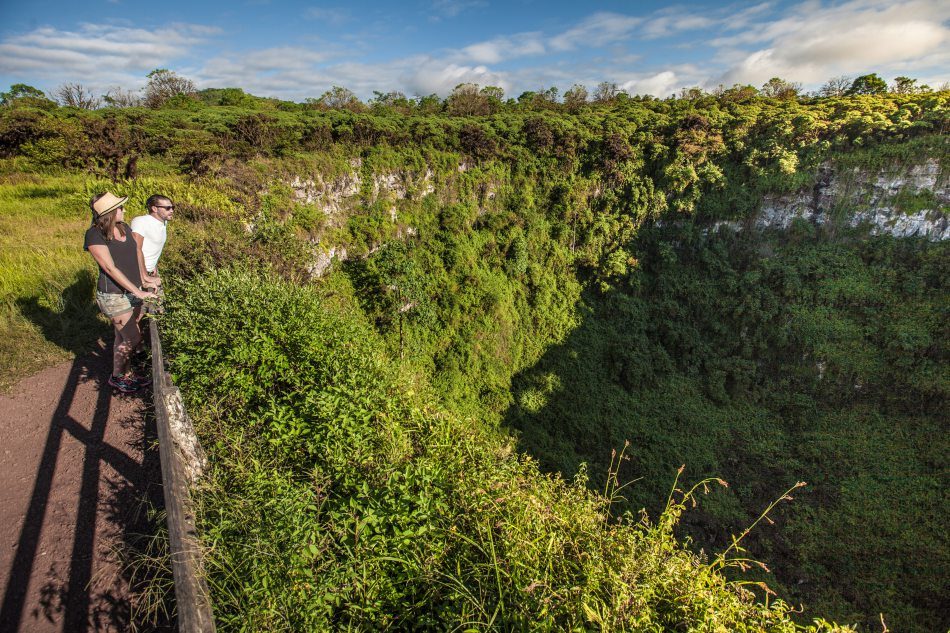
Los Gemelos (The Twin Craters)
The first stop is Los Gemelos (The Twin Craters), two colossal, volcanic sinkholes.
On a gentle hike around the rim, your guide will point out the birds of the endemic Scalesia forest such as Galapagos doves and Darwin’s finches.
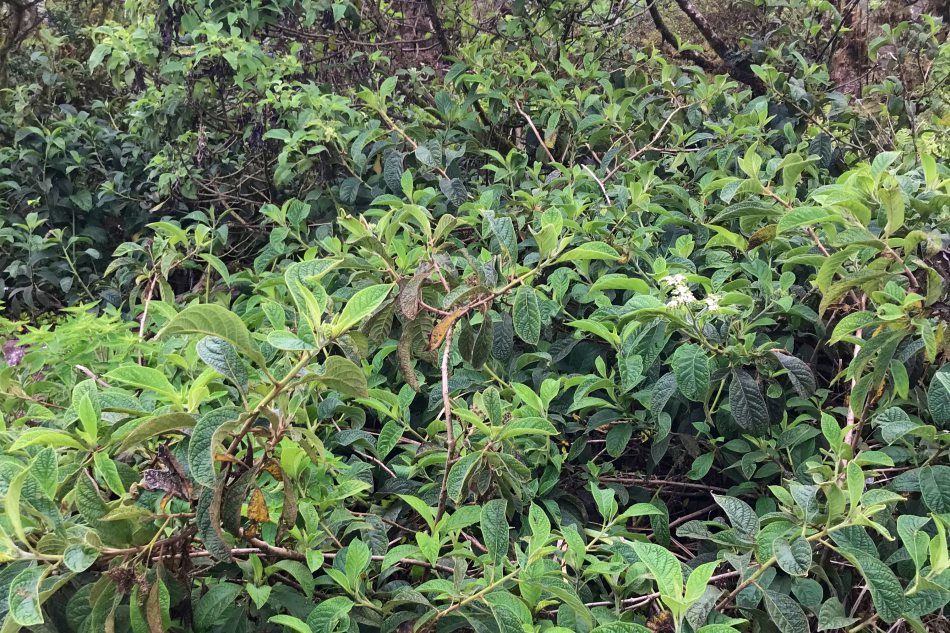
Scalesia & Miconia
The highlands are dominated by two distinct tree species, Miconia and Scalesia, each one forming its very own “vegetation zone”.
Scalesia is particularly interesting. A tree species endemic to the Galapagos that actually belongs in the daisy family (the only daisy to be a tree) and, as such, is astoundingly adaptive and resilient.
Miconia, on the other hand, is a much more common genus of plant species throughout, but the Galapagos variety features pretty red-tinged leaves and grows higher than its continental relatives.
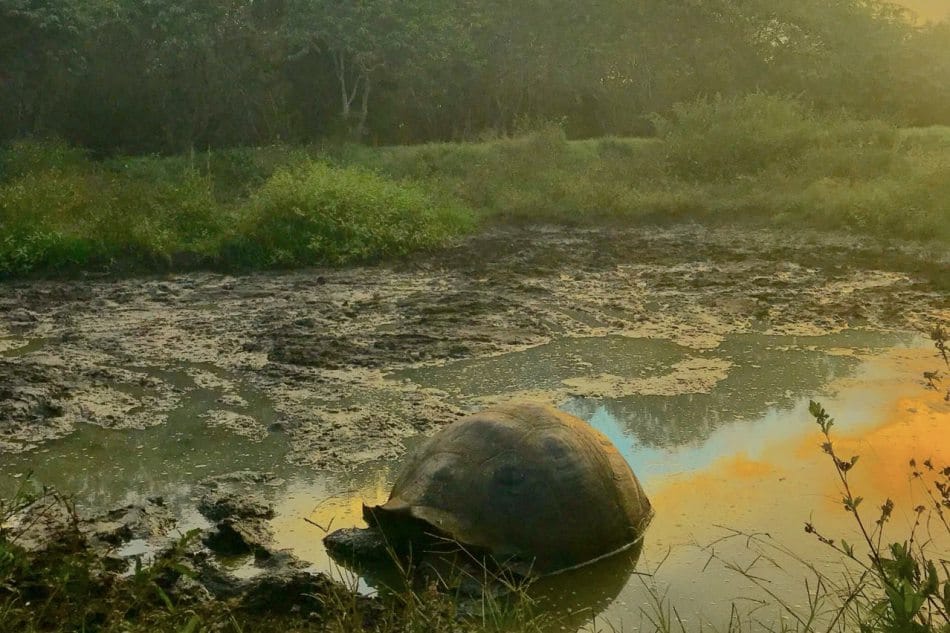
The Giant Tortoise Reserve
From Los Gemelos you continue to a giant tortoise reserve. Your tour of the reserve will follow a gentle circuit trail where you get within meters of these iconic Galapagos creatures. Keep a look out too for short-eared owls, as they are occasionally spotted in the trees.
The tortoise reserve is located very near Galapagos Safari Camp and is one of the best places for observing these fascinating creatures in the wild.
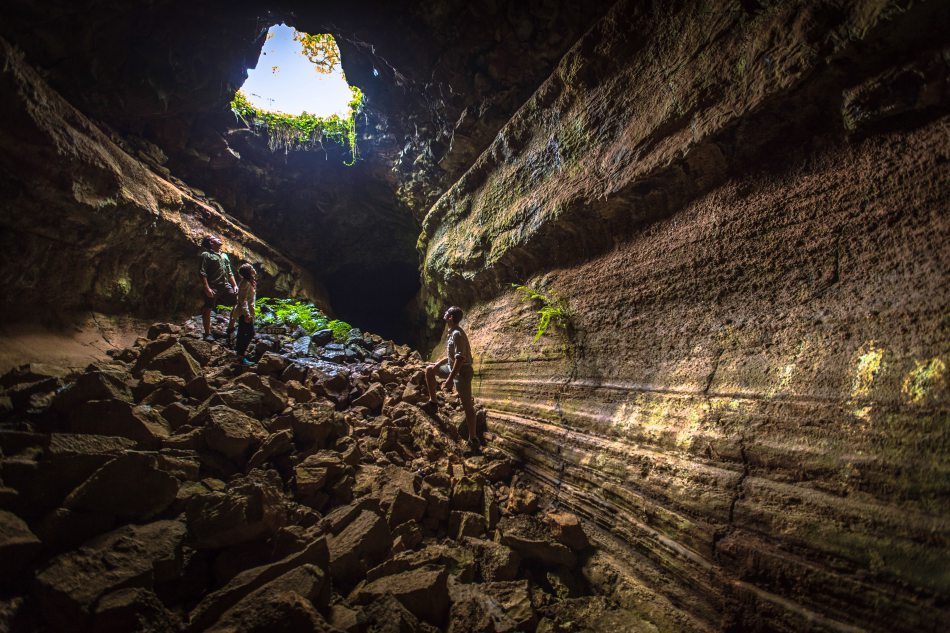
Lava Tunnels
The tortoise reserve also contains a network of underground lava tubes, formed centuries ago when lava flows cooled at the edges but kept flowing in the middle, leaving cave-like tunnels in their wake. To fully appreciate the uniqueness of the Galapagos Islands, and its wildlife, it’s important to first understand the archipelago’s geology and volcanic history.
2) The East of Santa Cruz
Cerro Mesa Reserve
Situated in the eastern highlands of Santa Cruz, Cerro Mesa is a private reserve, rich in endemic flora and bird life, including six subspecies of finches, mockingbirds, and short-eared owls, along with Galapagos tortoises exclusive to the island. Guests can enjoy a morning of exploration along the reserve’s trails, culminating at a lookout offering panoramic views of Santa Cruz and neighboring islands.
El Garrapatero
The Safari continues to Garrapatero Beach, either by car (15 minutes from Cerro Mesa) or by bike (a gentle eight-mile downhill ride). In contrast to the lush, green vegetation of the highlands, the coastal terrain consists of black lava, white sands, turquoise water and dense mangroves. Here you’ll find numerous species of Galapagos finches, including the cactus finch which feeds off the opuntia cacti that dot the trail on the 15-minute hike from the parking lot to the beach. As the beach comes into sight, look out for the Manzanillo trees along this trail. The small apples on their branches are inviting but poisonous. Even the sap can cause burns and rashes to the skin.
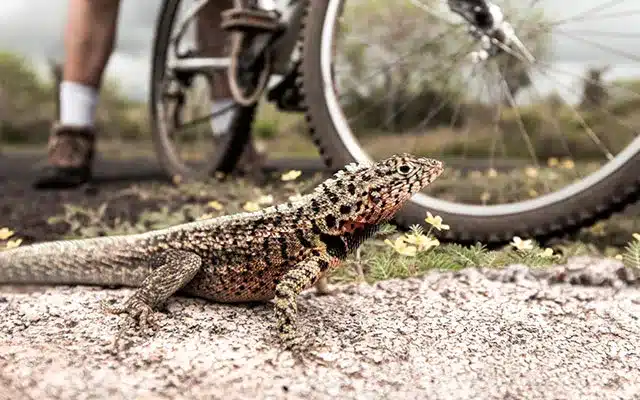
Other creatures above and below the waterline that call Garrapatero Beach home include marine iguanas, sea lions, blue-footed boobies, rays and sea turtles. Bordering the beach is a freshwater lagoon where flamingos, white-cheeked ducks and black-nested stilts can often be seen.
Just past the tide pools on the beach, clear waters offer a secluded swimming spot. We can also arrange kayaking here; a great way to explore the bay and its wildlife. As Garrapatero Beach is generally not included on cruise ship itineraries, it is less visited and you may even have it all to yourself.
3) The South of Santa Cruz
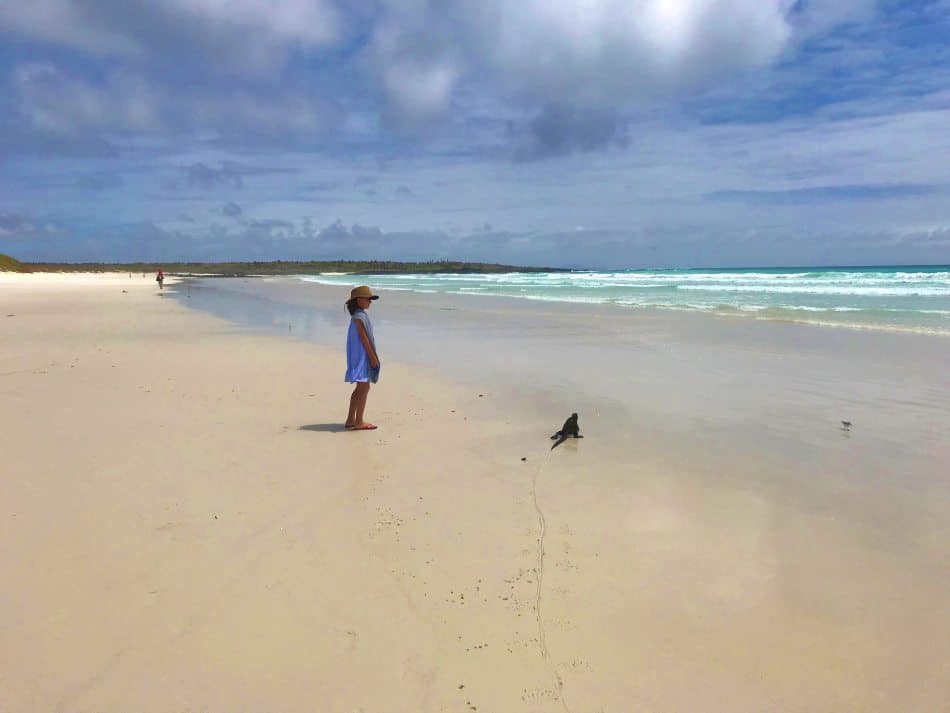
Tortuga Bay
Your day begins with a 45-minute hike to Tortuga Bay. Often listed as one of the world’s most beautiful beaches by publications such as The Independent, TripAdvisor and The Telegraph, it is a veritable “infinity beach” and particularly popular with sun-seekers.
Starting on the outskirts of Puerto Ayora, access to this secluded stretch of coastline is via a 2.5km paved path through a prickly pear cactus forest.
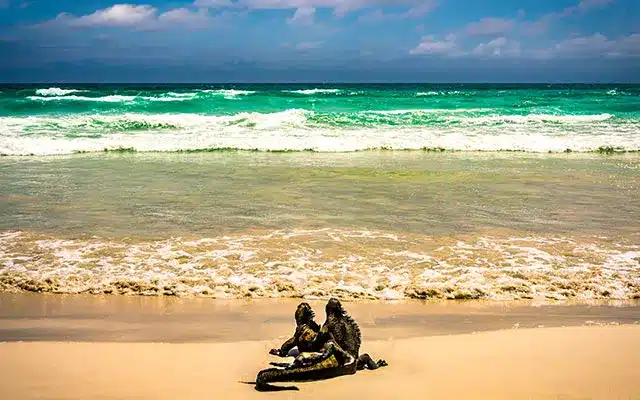
The trail ends on Playa Brava, a spectacular kilometer-long beach of blinding white sands peppered with marine iguanas. Here, the bay’s rolling, turquoise waves are perfect for surfers. Whether you’re a first-time learner or a seasonal pro, we can arrange surf lessons here with advanced notice. Note, the current can be strong and swimming is not recommended in certain sections, usually marked with flags.
If you continue to the far end of Playa Brava (‘brave beach’), and around the corner, you will find Playa Mansa (‘tame beach’), a smaller bay sheltered on one side by a cactus forest and on the other by mangroves. Its calm, shallow waters are rich in wildlife, making it an ideal snorkeling spot. We can also arrange kayaking here which is another fun way of exploring the nooks and crannies of the bay. In addition to marine iguanas, look out for baby reef sharks, rays and turtles. Above the water, expect to find brown pelicans, blue-footed boobies and red Sally Lightfoot crabs.
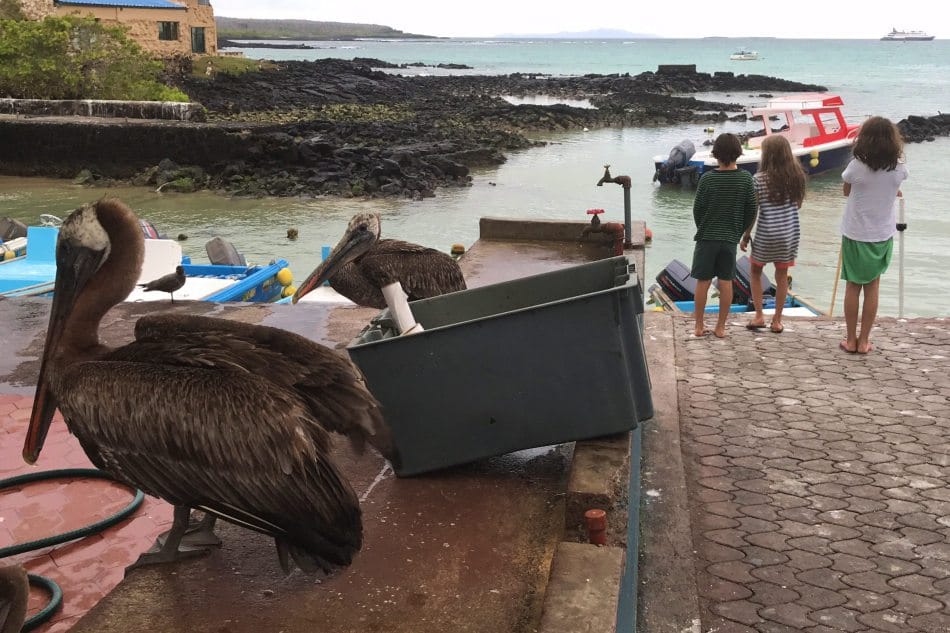
Puerto Ayora
On returning to Puerto Ayora, you are free to explore the town’s intriguing collection of shops, art studios and restaurants (we can give you recommendations). During the week, the wharf is bustling with fishermen and seafood stalls. But what makes this fish market particularly special is the crowd it attracts. Sea lions slide up to the counter, snatching whatever they can reach while pelicans and frigate birds dive bomb the stalls from above before being swatted away by irate merchants.
Charles Darwin Research Station
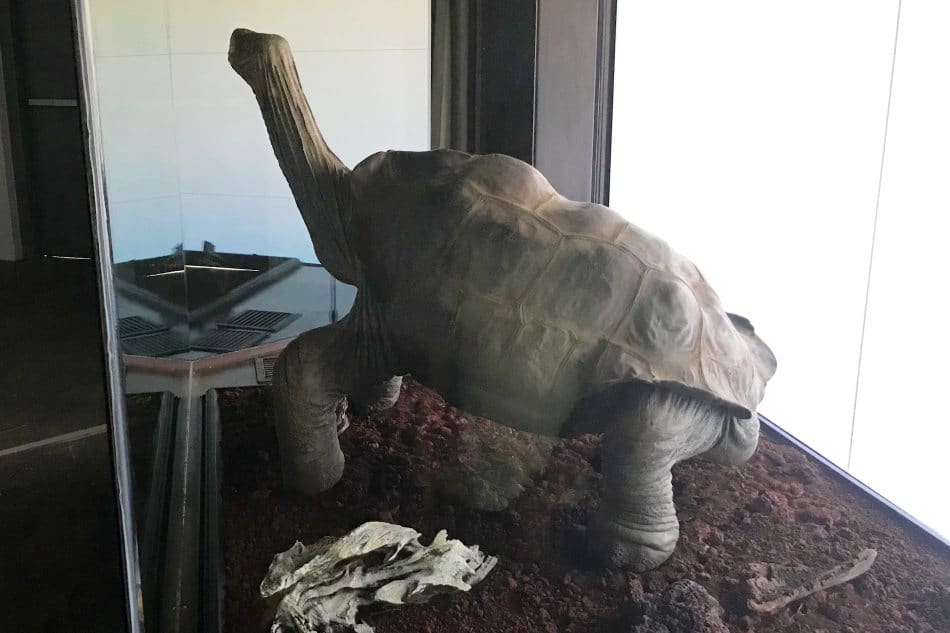
Just a 10-minute walk from the town center, the Charles Darwin Research Station is well worth a visit. This nonprofit organisation offers a fascinating glimpse into the conservation work that is ongoing across the archipelago. Part museum and part laboratory, the complex is home to a tortoise breeding center, where visitors can observe the iconic reptiles from hatchlings to adulthood at close range, as well as one of the most remarkable wildlife discoveries ever made, a male tortoise by the name of ‘Lonesome George’. Now preserved by taxonomists and displayed in a glass cabinet, find out more about this Pinta tortoise and how he remains a symbol of hope for endangered species around the world.
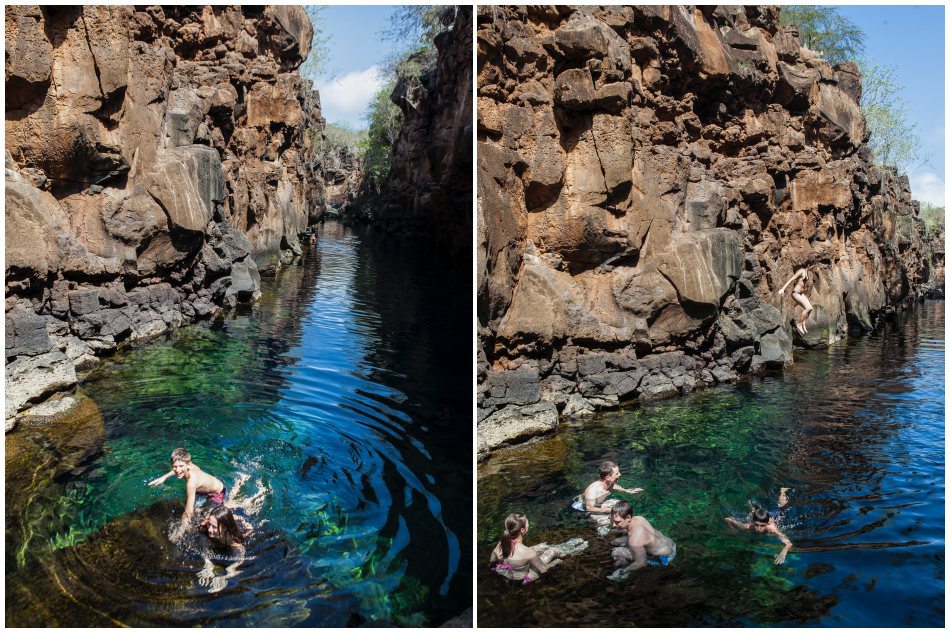
Photo credit: Ken Kochey
Las Grietas
Las Grietas, a picturesque small canyon with turquoise waters, holds particular allure for locals, drawing crowds especially during weekends and school holidays. While this enchanting spot isn’t typically featured in our signature Safaris due to high traffic, we prioritize our guests’ desires and preferences in all our tailored tours. Should you wish to include Las Grietas in your itinerary, don’t hesitate to request it from your Safari Designer.
Galapagos Islands to Visit
To learn more about the other islands we visit, see our guides below:
Plan your Galapagos Island Vacation!
See our suggested Galapagos itineraries and recommended activities.
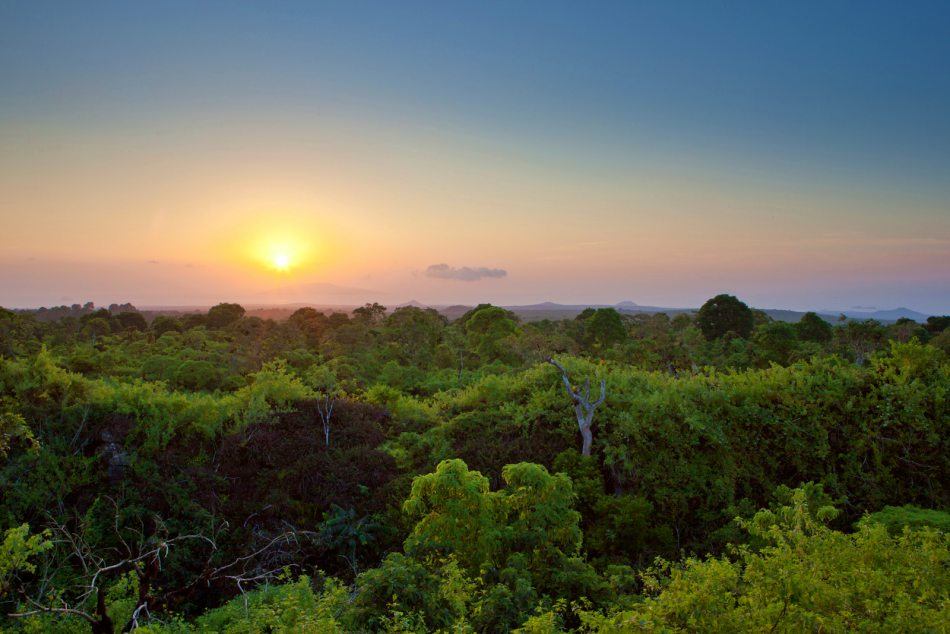 Santa Cruz Island, Galapagos
Santa Cruz Island, Galapagos
